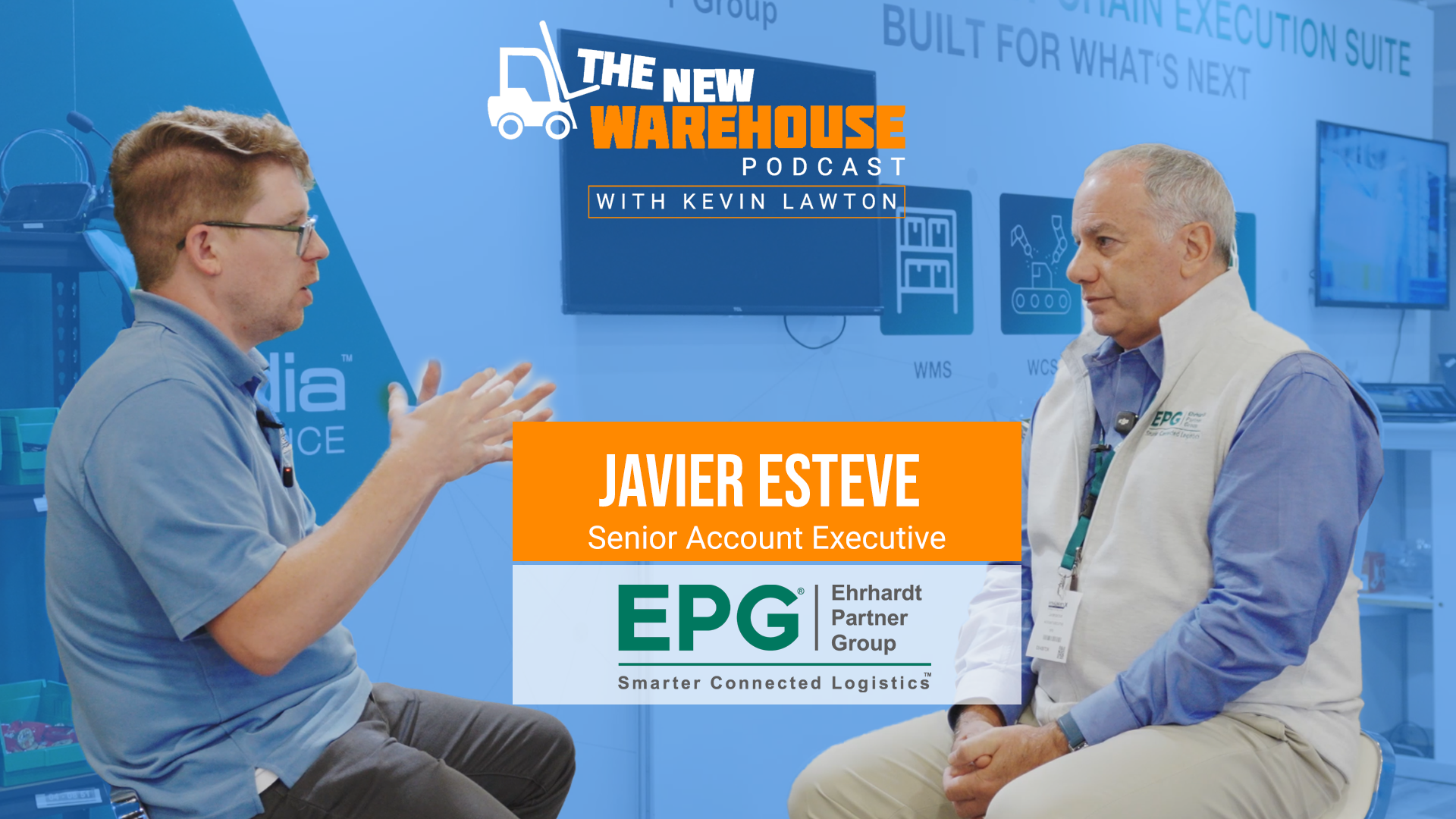
635: Integrating Fragmented Warehouse Systems with EPG’s Unified Approach
Live from the Intralogistex USA Conference in Miami, Kevin chats with Javier Esteve, Vice President of Sales at EPG (Ehrhardt Partner Group). EPG, founded in 1987 in Germany, now serves more than 1,600 customers worldwide and employs over 1,000 people. Known for its Lydia Voice and warehouse management solutions, EPG delivers a unified supply chain execution suite designed to simplify and connect every part of logistics. Javier shares how EPG helps organizations transition from fragmented warehouse technology to integrated, data-driven systems that support automation, efficiency, and a better employee experience.
From Fragmented Warehouse to a Single Source of Truth
Today’s supply chains often juggle multiple, disconnected systems. Javier explained that EPG’s EPG One platform acts as a single source of truth across logistics functions. “All of those things generate their own data. So as you start to address those complexities, you might introduce different applications, but they’ve gotta consume the same data.”
EPG’s modular architecture consolidates information from WMS, TMS, and automation tools into one unified platform. This makes operations not only more efficient but also AI-ready. As Javier put it, “The challenge now is to create that data in a way so that it’s consumable by things like artificial intelligence.” By ensuring consistent master data and system integration, EPG helps companies eliminate duplication, gain transparency, and lay the groundwork for future-proof optimization.
Balancing Automation, Labor, and User Experience
Labor costs remain a significant pain point in logistics. “For logistics operations, it’s labor and transportation. Those are the biggest ones they’ve got to tackle.” Javier emphasized that effective technology isn’t just about automation—it’s about people. “It’s not just replacing labor, but it’s also making it a better environment, a better user experience for that warehouse worker.”
He noted that turnover and slow onboarding can cost large organizations tens of millions annually in lost productivity. Voice-directed technology, for instance, empowers workers to stay hands-free and focused, improving both safety and satisfaction. “Studies have shown that the user satisfaction in warehouses using voice is 84% compared to around 56% for non-voice solutions.”
EPG’s integration of AI further supports employees. Workers can now interact directly with the system through conversational AI—for example, asking how to configure multi-stage picking or create a new dashboard widget. “If you want to build a new widget for a KPI, you don’t do it through the keyboard—you can do it through our AI engine.”
Tackling Fragmented Warehouse Technology
Warehouse operators often find themselves with a patchwork of systems that solve individual problems but don’t communicate effectively. Javier acknowledged, “You don’t always look at things holistically—‘Hey, we’ve got a burning issue; what can we throw at it?’”
EPG counters this through its modular, integrated supply-chain-execution suite. Each component—whether WMS, TMS, or voice—can operate independently or connect seamlessly with existing third-party systems. “Designing things in a way that allows the customer maximum flexibility to limit the proliferation of applications … and leverage what they have when possible.”
Javier also encouraged organizations to think beyond software purchases. Sometimes the solution lies not in another application but in more innovative use of technology: “Maybe we don’t need an application—maybe we need a technology.”
Key Takeaways
- EPG One consolidates data into a single, AI-ready source of truth across logistics systems.
- Configurable architecture supports both low- and highly-automated facilities (Gartner-rated #1 WMS for automation).
- Labor and transportation remain the top cost drivers; technology should improve efficiency and employee experience.
- Voice solutions raise user satisfaction to 84% versus 56% for non-voice.
- EPG’s modular suite prevents over-buying and reduces “application sprawl.”
- AI-driven dashboards empower users to innovate and analyze productivity in real time.
- Companies should explore technology options early—before fragmented warehouse systems create bottlenecks.
Listen to the episode below and leave your thoughts in the comments.
Guest Information
For more information on EPG, click here.
To connect with Javier Esteve on LinkedIn, click here.
For more information about integrating fragmented warehouse systems, check out the podcasts below.
596: Warehouse Orchestration with AutoScheduler
628: Orchestrate Warehouse Automation Technologies with GreyOrange and enVista
631: Customer-Centric Automation with Adrian Stoch of Hai Robotics
